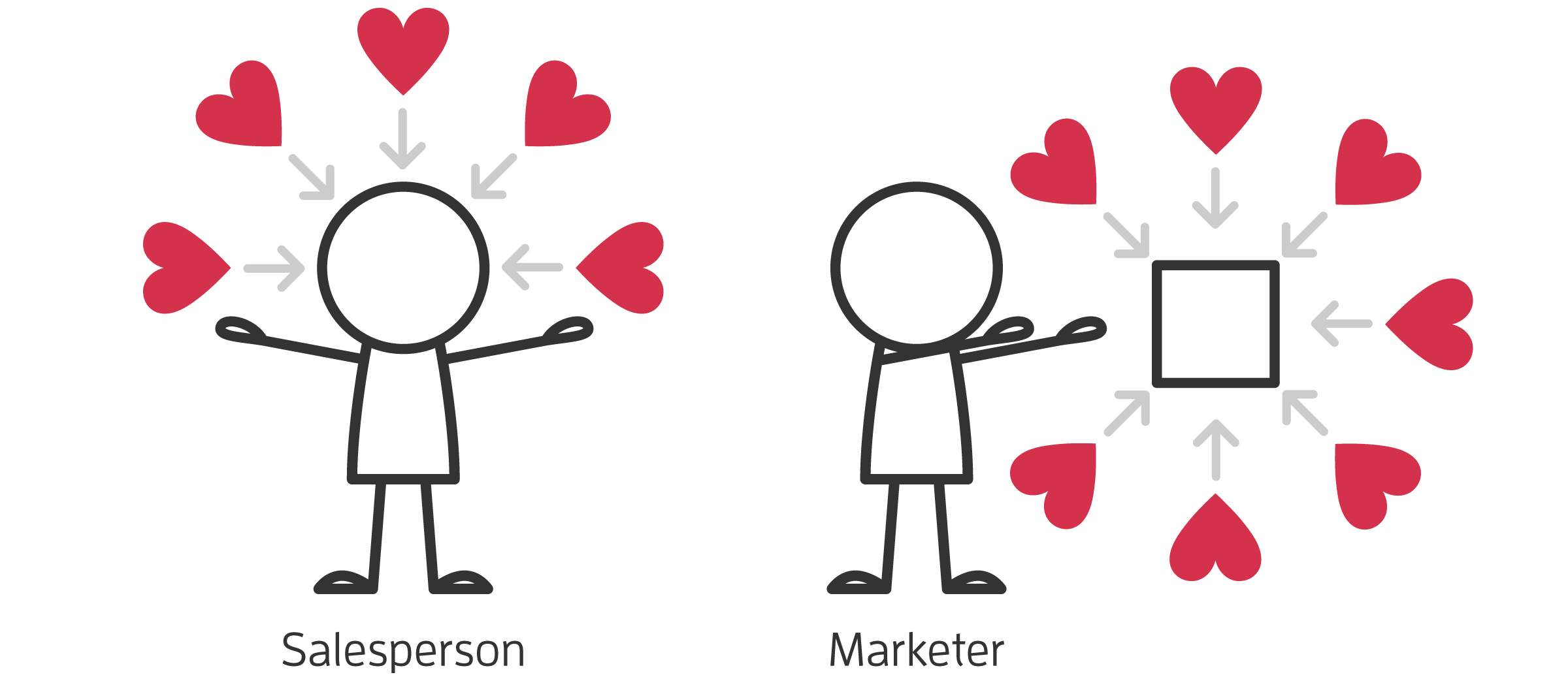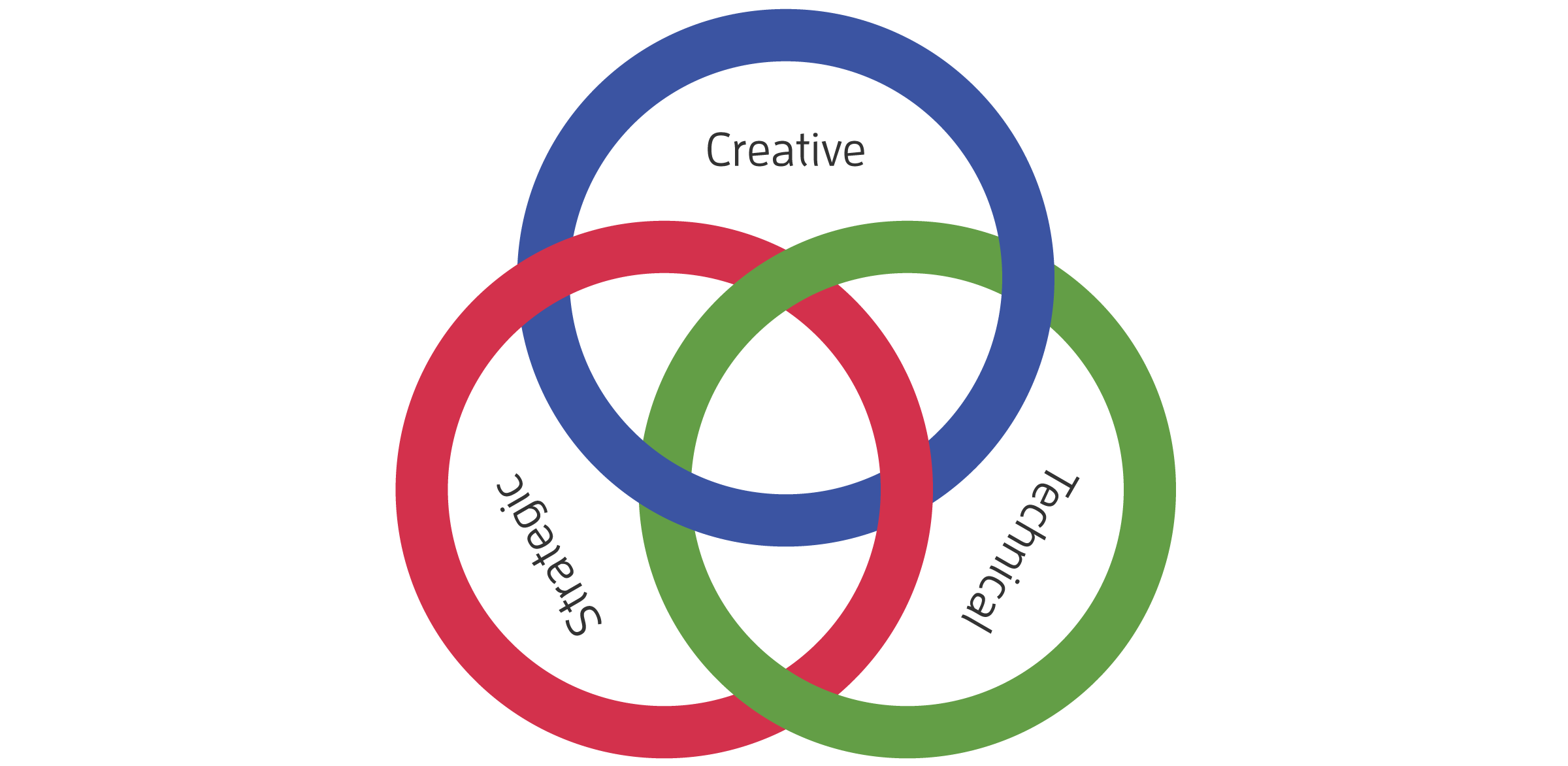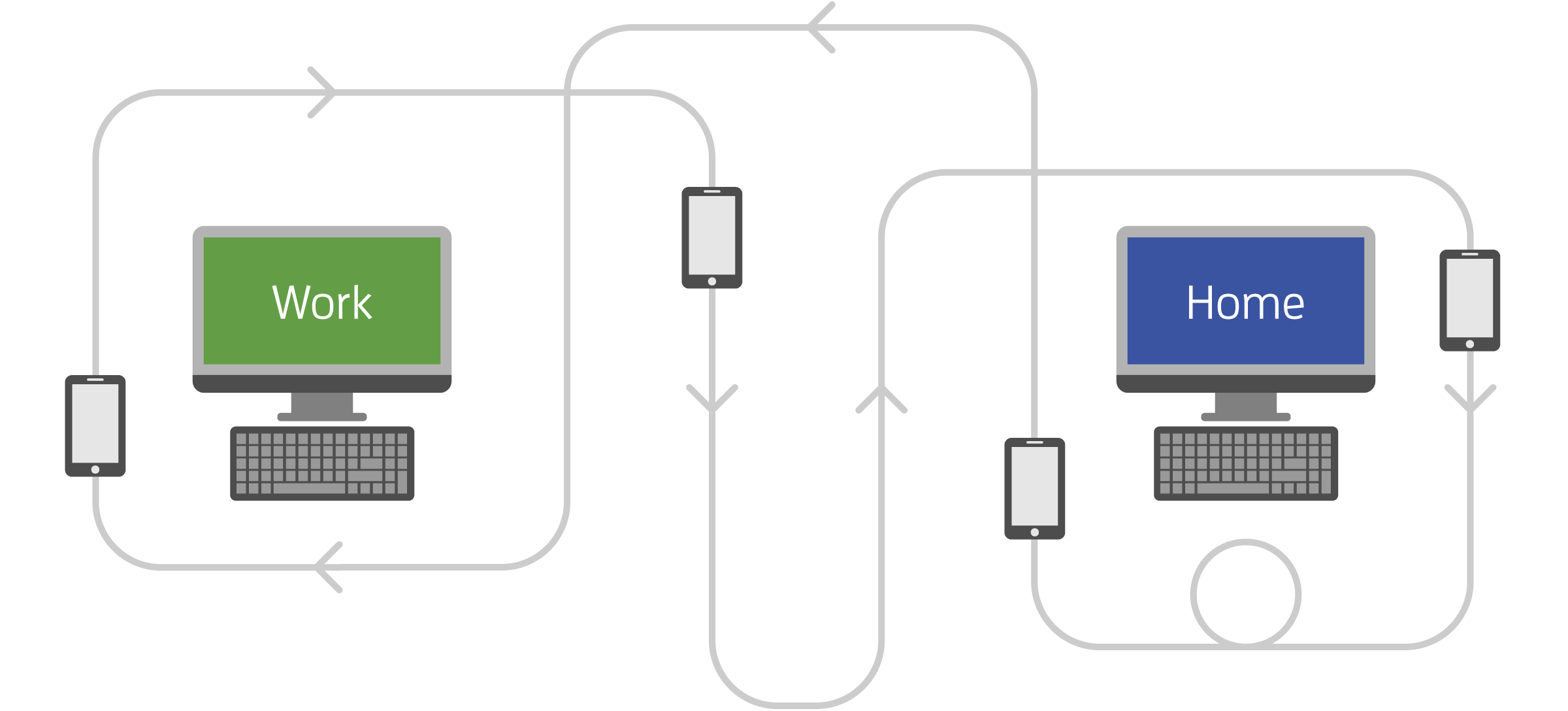What Is Online Presence?
How We Exist Online Today
Less than ten years ago, the Web dominated our online experience. This is no longer the case. The medium through which content is delivered to us is becoming increasingly fragmented. Managing this fragmentation has become the biggest pain point for businesses with limited resources. Most business owners are told that they need to have presence on Facebook, Twitter, and Instagram, but beyond creating profiles on these platforms, they do not know what to do. They are also told that they need to be mobile-friendly, that they need videos, and that they still can’t ignore email. How can we best manage our online presence today?
Topology of Digital Marketing

Today’s marketing ecosystem should have a star-shaped topology where a website functions as the central, aggregating repository. Website is still the centerpiece because it is the only place where your business has full control. (You do not have full control over what the social media sites do with your content.) However, central does not mean dominant; it simply functions as an organizing structure to make sure that your marketing objective is aligned across all channels.
Also, just because the user experience is fragmented does not mean that you need to accommodate them all. Each of these popular touchpoints has its idiosyncratic characteristics, so depending on the type of audience you are trying to reach, some would be more effective than others. Analyzing your own market and formulating a strategy for where to invest your money becomes the first important step.
Sales vs. Marketing

Before we move on, we need to be on the same page about the difference between sales and marketing as the line between them can often get blurry. Sales and marketing require two different types of people (talent). Unless you are Steve Jobs, you are not likely to be good at both. What a great salesperson is selling is ultimately him or herself because sales is about leveraging individual human interactions (e.g. face-to-face meetings, phone conversations or personally addressed emails). A salesperson has to be immediately likable and trustworthy; otherwise the conversation cannot move on to the products or services.
Sales is effective when the product or service you are selling is complex (needs a lot of explanations) and/or requires a lot of trust. It won’t work if the price point of your product is too low. You cannot afford an hour of human labor to sell each of your product if the price is $100.
This is where marketing comes in. Marketing is a method of selling something without human interactions. It’s a highly scalable way of selling. Because there is no human interaction, marketers cannot rely on their own charm, looks or personality. They have to create something separate from themselves to attract people.
So, even before you decide which marketing channels to use, you may want to figure out whether you need sales or marketing (or both). FYI: We can’t help you with sales.
Technical / Creative / Strategic

There are three key ingredients to marketing which must be carefully balanced. Like Borromean rings, if one falls out, the whole thing falls apart.
Technical
What is different about digital marketing from traditional marketing is that it is highly technical. Because every marketing channel becomes less effective over time (due to saturation), you have to always be looking for new technologies that offer new marketing opportunities (where people are more likely to pay attention to you). By the time these platforms can provide mature, user-friendly interfaces for marketers, they would have already lost some of their effectiveness. This means the ability to quickly understand and adopt new technologies is essential in staying ahead of the competition.
Creative
But, your technical ability must be equally balanced with your creative ability. Even if your technical ability lets you get on a less saturated platform, if you do not have the creative chops to produce something that draws people’s attention, your technical advantage would be canceled out.
Suppose you are a heterosexual man looking for a heterosexual woman. Your technical ability would allow you to find a bar full of heterosexual women, but if you are not a likeable person to begin with, your probabilistic advantage would be canceled out. The same logic.
Strategic
Being technical and creative isn’t enough. You need to draw the attention of the right people for the right reasons. If you are selling reading glasses, a marketing strategy that draws millions of teenagers would be useless. Technical and Creative are tactical components that need to be organized by this Strategic component.
One of the advantages of digital marketing is that you can get data; lots of them, and very quickly. So, rather than guessing, until the cows come home, what would work and wouldn’t, you can just try a bunch of things, and see which ones work better. To take advantage of this feedback loop, you would have to adopt a more iterative process. You need to adapt quickly to the data. This means these three aspects must be tightly coordinated in order to respond to the feedback loop quickly and often. The more you can iterate over the same time and budget, the better your results would be.
Strategic Frameworks
It is nearly impossible to predict what goes viral, but there are certain ways of analyzing each marketing problem that would increase our odds of succeeding. Here are some of the way in which we frame and organize our problems.
Mediums: Text / Photo / Video

Have you noticed that every article now has an image associated with it? This was not the case five years ago. Ten years ago, most articles had no images. This shift was mainly motivated by how people share content on social media. When searching on Google was the primary way people found content on the web, whether your article had an image or not did not matter. But now that viral sharing on social media has become a more effective way to disseminate information, you would want something eye-catching to go with it.
Going further: Have you noticed that everything on Facebook is now moving? Since every piece of content now has an eye-catching image, to draw attention, you now need something moving. It’s a natural progression.
That’s not even enough. Because so much of the content is now consumed on mobile devices, videos need to be optimized for them. Snapchat, for instance, is ahead of the curve in offering the full-screen, vertical video format for their advertising platform. Just as web design has now become “responsive” (layout that gracefully adapts to any screen size and dimensions), videos would have to be responsive also where you produce multiple formats from one shoot.
Mobile vs. Desktop

For many businesses, the difference between mobile and desktop is simply a one of screen dimensions. If so, the issue isn’t about different devices but screens. The difference becomes more relevant, or even critical, if your marketing strategy needs to target people’s behaviors.
For instance, if you need to catch their attention while they are outdoor, targeting mobile devices would naturally work better. Since mobile devices move with the users, you can catch them while they are at certain locations, engaged in certain activities, and are in certain states of mind.
Push (social) vs. Pull (search)
Your content can be pushed to the audience or pulled by them. A piece of content posted on social media is pushed to the audience because they did not specifically ask for it. There is an element of surprise; and as a marketer we want that to be a nice surprise.
When a user searches on Google to find the same piece of content, we can say she pulled it. She was looking for a specific piece of information and you happen to provide it (what Google deems as the best/better answer).
There are pros and cons to both. With pulling (search), you can be connected to people who are looking for something specific. If what you are offering is cosmetic dentistry, then Google can connect you to people who are searching for “cosmetic dentists”. But what you offer may not be something people search for. For instance, most people would not search for novel products and services, simply because they do not even know they exist. Another example would be luxury and entertainment products. Because these are nice-to-have products, not must-have, people are less likely to search for them. These products need to be pushed.

